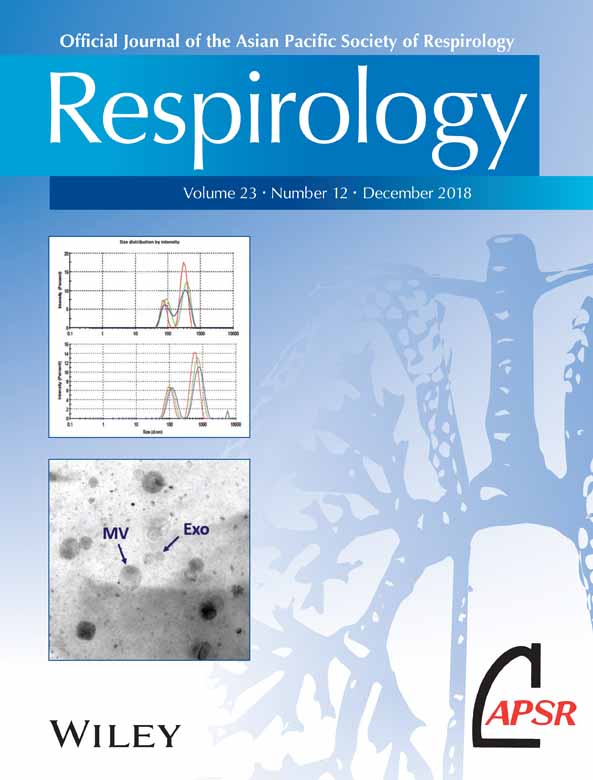Clinical behaviour of patients exposed to organic dust and diagnosed with idiopathic pulmonary fibrosis
Abstract
Background and objective
Although idiopathic pulmonary fibrosis (IPF) patients experience a worse survival compared with chronic hypersensitivity pneumonitis (CHP), organic dust exposure is a known risk factor for both IPF and CHP.
Methods
We divided patients diagnosed with IPF, based on their exposure to moulds/birds (absent: group A; present: group B). We retrospectively compared pulmonary function and survival between groups A and B, and a separate CHP cohort (group C).
Results
A total of 293 patients were included (group A: n = 171, group B: n = 73, group C: n = 49). Demographics and baseline pulmonary function did not differ between groups A and B, but significant differences were seen between groups B and C. Median survival of group B was 84 months, which was longer than group A (43 months, P = 0.002), but lower than group C (157 months, P = 0.04), in both univariate and multivariate analyses. Antifibrotic treatment resulted in a better outcome in group A (hazard ratio (HR): 0.44) and group B (HR: 0.12) without interaction between exposure and antifibrotic use (P = 0.20). Forced vital capacity (FVC) decline was not associated with mould/bird exposure in this cohort.
Conclusion
Group B patients experienced a better outcome compared with (non-exposed) IPF patients, although worse compared with CHP patients. Antifibrotic treatment in group B resulted in a similar beneficial effect compared with group A. Further research is needed to ascertain the diagnostic designation in this exposed usual interstitial pneumonia (UIP) patient group without other CHP features.




